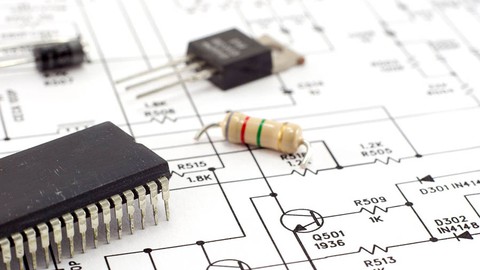
Udemy – Electric Circuits In Depth Part 1 (12/2020)
English | Size: 814.46 MB
Category: Tutorial
The Following Topics are Covered:
Ohm’s Law
Resistance, Voltage
Calculate Current
What is Voltage Drop
What is Potential Difference
Source & load voltages
Source Impedance
Line Impedance
Load Impedance
Voltage drop across line
Voltage drop across Source impedance
Voltage drop across load
What is Power Loss, I2R Loss
What is % Voltage Drop
What is reference / Neutral Voltage
Concept of Potential difference.
What will happen if neutral voltage rise
Concept of Constant Voltage Source
Concept of Constant Current Source
Rated Current & Short Circuit Current
Which is good high or low source impedance merit & De-merit
Ohm’s law states that the voltage or potential difference between two points is directly proportional to the current or electricity passing through the resistance, and directly proportional to the resistance of the circuit. The formula for Ohm’s law is V=IR. This relationship between current, voltage, and relationship was discovered by German scientist Georg Simon Ohm. Let us learn more about Ohms Law, Resistance, and its applications.
Most basic components of electricity are voltage, current, and resistance. Ohm’s law shows a simple relation between these three quantities. Ohm’s law states that the current through a conductor between two points is directly proportional to the voltage across the two points.
V= IXR [Voltage = Current x Resistance]
The SI unit of resistance is ohms and is denoted by Ω
This law is one of the most basic laws of electricity. It helps to calculate the power, efficiency, current, voltage, and resistance of an element of an electrical circuit.
Ohm’s law helps us in determining either voltage, current or impedance or resistance of a linear electric circuit when the other two quantities are known to us. It also makes power calculation simpler.
In order to establish the current-voltage relationship, the ratio V / I remains constant for a given resistance, therefore a graph between the potential difference (V) and the current (I) must be a straight line.
It is the constant ratio that gives the unknown values of resistance,
For a wire of uniform cross-section, the resistance depends on the length l and the area of cross-section A. It also depends on the temperature of the conductor. At a given temperature the resistance,
A series generally means connected along a line, or in a row, or in an order. In electronics, series resistance means that the resistors are connected one after the other and that there is only one path for current to flow through.
Individual resistance add up to the total circuit resistance
Current through the circuit is the same at every point.
Individual voltages throughout the circuit add up to the total voltage.
There are many different ways to organize a parallel circuit. In the practical world, most of the wiring is done in parallel so that the voltage to any one part of the network is the same as the voltage supplied to any other part of it.
The reciprocals of all the individual resistances add up to the reciprocal of the total circuit resistance.
1/RT = 1/R1 + 1/R2 + 1/R3 .
Voltage through the circuit is the same at every point.
Individual current draws throughout the circuit add up to the total current draw.
Course Content (15 lectures • 1hr 56m)
1. Introduction (06:16)
2. Understand Ohm’s Law (07:37)
3. Series Circuit Explained (08:06)
4. Parallel Circuits Explained (09:34)
5. Difference Between Voltage Drop and Potential Difference (06:52)
6. Source and Load Voltages (01:31)
7. Source Impedance , Ghost and Real Voltages (15:23)
8. Line Impedance and Line Voltage Drops (03:18)
9. Power Loss Calculations (03:33)
10. Percentage Voltage Drop, Voltage Regulations (07:50)
11. Understanding Reference and Neutral Voltages (18:19)
12. Voltage Source (05:07)
13. Constant Current Source (02:51)
14. Rated Current, Short Circuit Current (10:31)
15. Introduction to My Courses (09:13)

RAPIDGATOR
rapidgator.net/file/fe52e16f6fc62ad5d78c08fcf1ec2eb1/Udemy_-_Electric_Circuits_In_Depth_Part_1.part1.rar.html
rapidgator.net/file/8b8f9105e4ad705f81c44a6e70bdff5c/Udemy_-_Electric_Circuits_In_Depth_Part_1.part2.rar.html
NITROFLARE
nitroflare.com/view/B9B8AA0CB1B4B7A/Udemy_-_Electric_Circuits_In_Depth_Part_1.part1.rar
nitroflare.com/view/D834BDEC68BE94E/Udemy_-_Electric_Circuits_In_Depth_Part_1.part2.rar